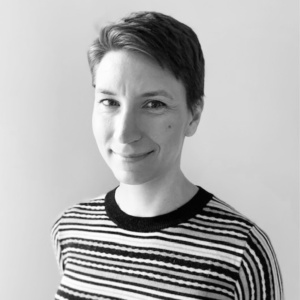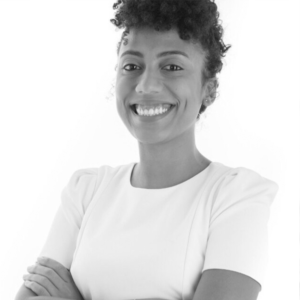BE-Ex welcomes new Senior Projects Associate, Jordana Vasquez, and Projects Manager, Katie Schwamb, to the team!

Katie Schwamb
Katie grew up in Texas and earned a Bachelor of Architecture from The University of Texas at Austin, where she honed her interest in buildings. After spending a year working on a neighborhood revitalization initiative as an AmeriCoprs VISTA with Habitat for Humanity International in Atlanta, Katie moved to NYC and has been striving to help improve the built environment ever since. On the weekends you can often find her riding my bike, baking, or walking her dog, Joel.
1. Share your favorite energy factoid
I find the statistics from “The Impact of Green Buildings on Cognitive Function” aka the COGfx study fascinating. For example, we spend roughly 90% of our time indoors and buildings with improved indoor environments, i.e. those with enhanced ventilation and minimized VOC exposure, consistently improved people’s productivity and cognitive abilities.
2. What are you currently reading?
I just picked up How You Say It by Katherine D. Kinzler which piqued my interest since it explores the impacts of speech on social identity and dynamics.
3. What are some ways you reduce your carbon footprint at home?
I try to be a conscious consumer/building occupant.
-
- Can I use a desk fan, instead of turning on the AC?
- Can I bring my own reusable cup or container to that cafe?
- Can I take the stairs, instead of the elevator?
- Can I reuse, compost, or recycle this instead of throwing it away?
- Can I get this at a local business, instead of a big box store?
There are plenty of solutions for an issue or need, but the key is to evaluate your options and select the most appropriate, positively impactful option whenever possible.

Jordana Vasquez
Jordana Vasquez has experience working with energy efficiency and sustainability measures for the built environment in NYC. Trained as an architect, she is passionate about socially-driven multidisciplinary projects that advance green, healthy, equitable, and inclusive environments. She is also the Co-Founder of Women of Color/Collective in Sustainability (WOC/CS)– an affinity group spotlighting opportunities for collaboration, connection, resource & mentorship for WOC in sustainability.
1. Share your favorite energy factoid.
Last year, I had the opportunity to hear from Council Member Costa Constantinides on why he was voting yes to close Rikers Island Jail and transform it into a model for green infrastructure. The 413-acres will generate power from solar farms and would also allow the city to move fossil fuel power plants out of black and brown communities and into the island. The Renewable Riker’s Act package will also include feasibility studies for constructing a wastewater treatment facility and battery storage on the island that will serve the Bronx and Queens.
2. What ways do you reduce your carbon footprint at home?
Offices naturally come equipped with a number of items that are plugged in, whether that be computers, lamps, chargers, space heaters, fridges, microwaves, or other such items. While unplugging some of these items would not make sense (such as many kitchen items), smaller items like chargers or lamps can and should be unplugged at the end of the day. We often forget that simply unplugging some things can end up saving a lot of energy. I think more office spaces should be reminded of this and we should know what should and should not be unplugged when leaving an office space.
3. What are you currently reading?
“The Fishermen” by Chigozie Obioma and “Tell me About Yourself” by Holley M. Murchison.